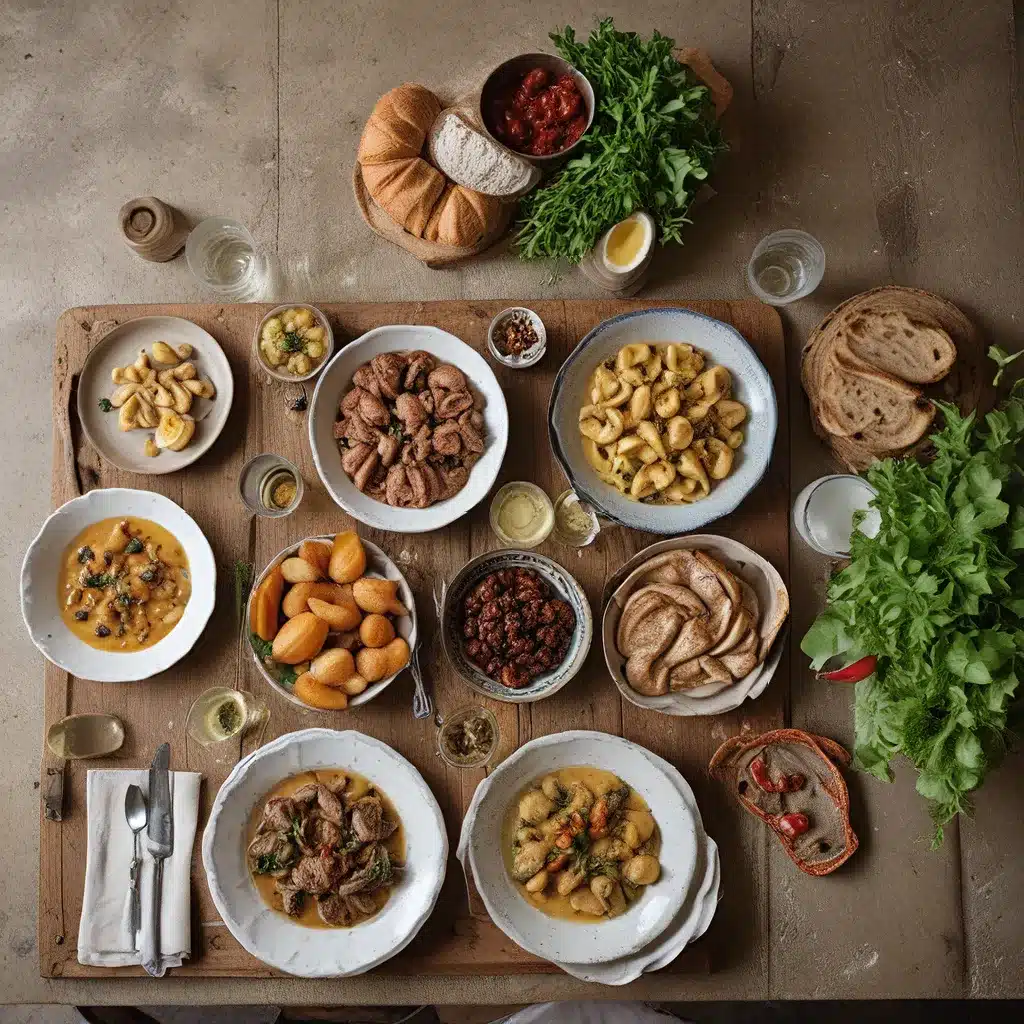
As a self-proclaimed foodie, I’ve always been intrigued by the diverse culinary landscapes of the world. And when it comes to the unique flavors and traditions of the Caribbean, few regions captivate me as much as Saint Marc, Haiti. Recently, I had the opportunity to embark on a culinary adventure through this vibrant and culturally rich area, and let me tell you, it was a truly unforgettable experience.
Discovering the Flavors of Saint Marc
My journey began in the heart of Saint Marc, where I found myself immersed in a bustling local market. The air was thick with the aroma of spices, the sizzle of sauté pans, and the lively chatter of vendors. As I wandered through the stalls, I was struck by the sheer variety of ingredients on display – from the vibrant Red Haitian Pumpkin and the earthy Migan (a starchy tuber) to the fragrant Pikliz (a spicy Haitian pickle) and the elusive Djon Djon (a type of edible fungus).
Eager to dive deeper into the local cuisine, I sought out the guidance of a knowledgeable food guide who introduced me to the concept of “Kreyol Cuisine.” This unique culinary tradition is a reflection of Haiti’s diverse cultural heritage, blending African, French, and indigenous Taíno influences. As I learned, the flavors of Kreyol Cuisine are characterized by the liberal use of spices (like cloves, cinnamon, and allspice), the incorporation of tropical produce, and the commitment to using locally sourced, sustainable ingredients.
One of the standout dishes I had the pleasure of sampling was the iconic Griyo – tender, slow-cooked pork that had been marinated in a complex blend of spices, citrus, and aromatic herbs. The Legume (a vegetable stew) was another revelation, with its vibrant colors and perfectly balanced flavors. And of course, I couldn’t leave without indulging in the Pate Kode, a savory pastry filled with spiced ground beef and vegetables, which had me utterly captivated.
Exploring the Diverse Culinary Regions of Saint Marc
As I delved deeper into the culinary landscape of Saint Marc, I quickly realized that the region’s flavors were not uniform but rather a tapestry of distinct regional variations. Each commune (or municipality) within Saint Marc seemed to have its own unique culinary identity, shaped by the availability of local ingredients, traditional cooking methods, and the cultural influences of its inhabitants.
In the coastal commune of Verrettes, for instance, seafood reigned supreme. I had the opportunity to savor the Lambi (conch) prepared in a spicy, tomato-based broth, as well as the Ti-Malice, a delicate fish stew infused with fragrant herbs and citrus. The inland commune of Dessalines, on the other hand, was renowned for its hearty, earth-toned dishes like the Joumou (a pumpkin soup) and the Mayi Moulin (a cornmeal porridge).
As I traversed the various regions, I couldn’t help but marvel at the culinary ingenuity of the Saint Marc locals. In the mountainous commune of Gros-Morne, I discovered the Bannann Peze, a crispy, flattened plantain that had been expertly fried and seasoned. And in the bustling city center of Saint Marc itself, I stumbled upon the Fritay (fried street food) vendors, each offering their own unique spin on classics like Akra (malanga fritters) and Gode (fried pumpkin).
Connecting with the Culinary Community
One of the most rewarding aspects of my Saint Marc culinary adventure was the opportunity to connect with the local chefs, food producers, and culinary enthusiasts who were the driving force behind the region’s vibrant food culture. Through these interactions, I gained a deeper appreciation for the rich history, intricate techniques, and unwavering passion that underpin the Kreyol Cuisine.
At the Nourimanba Production Center, operated by the non-profit organization Partners In Health, I witnessed firsthand the production of a life-saving, nutrient-dense peanut paste used to treat childhood malnutrition in the region. The dedication and care that went into this process was truly humbling, and it reinforced the vital role that food plays in nourishing and empowering communities.
I also had the privilege of visiting the University Hospital of Mirebalais, a state-of-the-art medical facility that not only provides high-quality healthcare but also serves as a training ground for the next generation of Haitian culinary professionals. Here, I learned about the hospital’s innovative culinary residency program, which equips aspiring chefs with the skills and knowledge to elevate Kreyol Cuisine and ensure its preservation for years to come.
Celebrating the Future of Kreyol Cuisine
As my time in Saint Marc drew to a close, I couldn’t help but feel a profound sense of admiration and excitement for the future of Kreyol Cuisine. The region’s unwavering commitment to celebrating its culinary heritage, while also embracing innovation and sustainability, is truly inspiring. From the vibrant local markets to the cutting-edge research and training initiatives, it’s clear that the people of Saint Marc are poised to play a pivotal role in shaping the global culinary landscape.
I encourage all food enthusiasts to embark on their own culinary journey through the regions of Saint Marc. Whether you’re seeking to immerse yourself in the rich flavors of traditional Kreyol Cuisine or to explore the cutting edge of culinary innovation, this remarkable region has so much to offer. And who knows, you might just find yourself as captivated by the flavors and stories of Saint Marc as I am. After all, as the saying goes, “the journey is the destination,” and with Saint Marc, the journey is truly unforgettable.
So, are you ready to begin your own culinary adventure in Saint Marc? I certainly hope so, because the Saint Marc USA website is just the starting point for a truly remarkable gastronomic experience.

